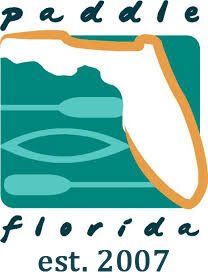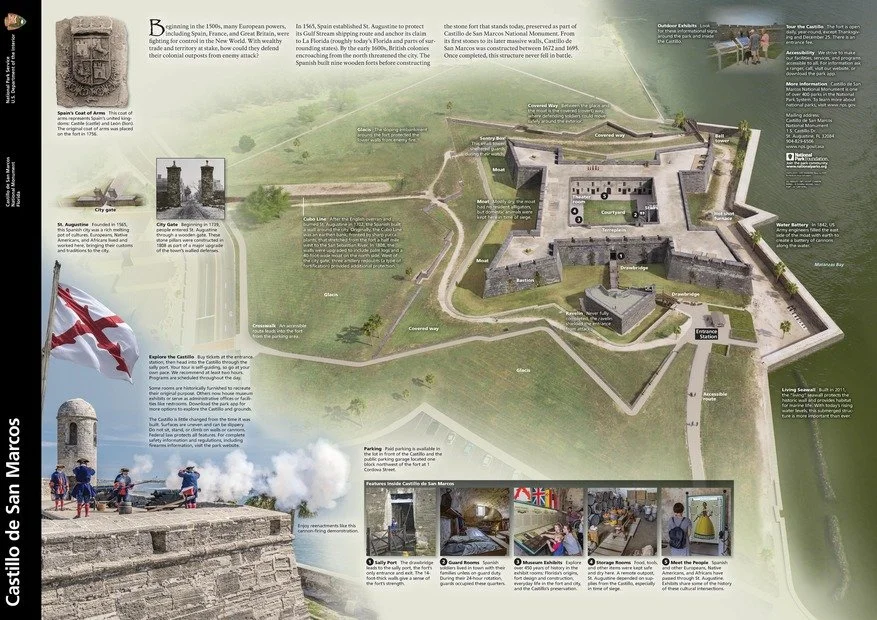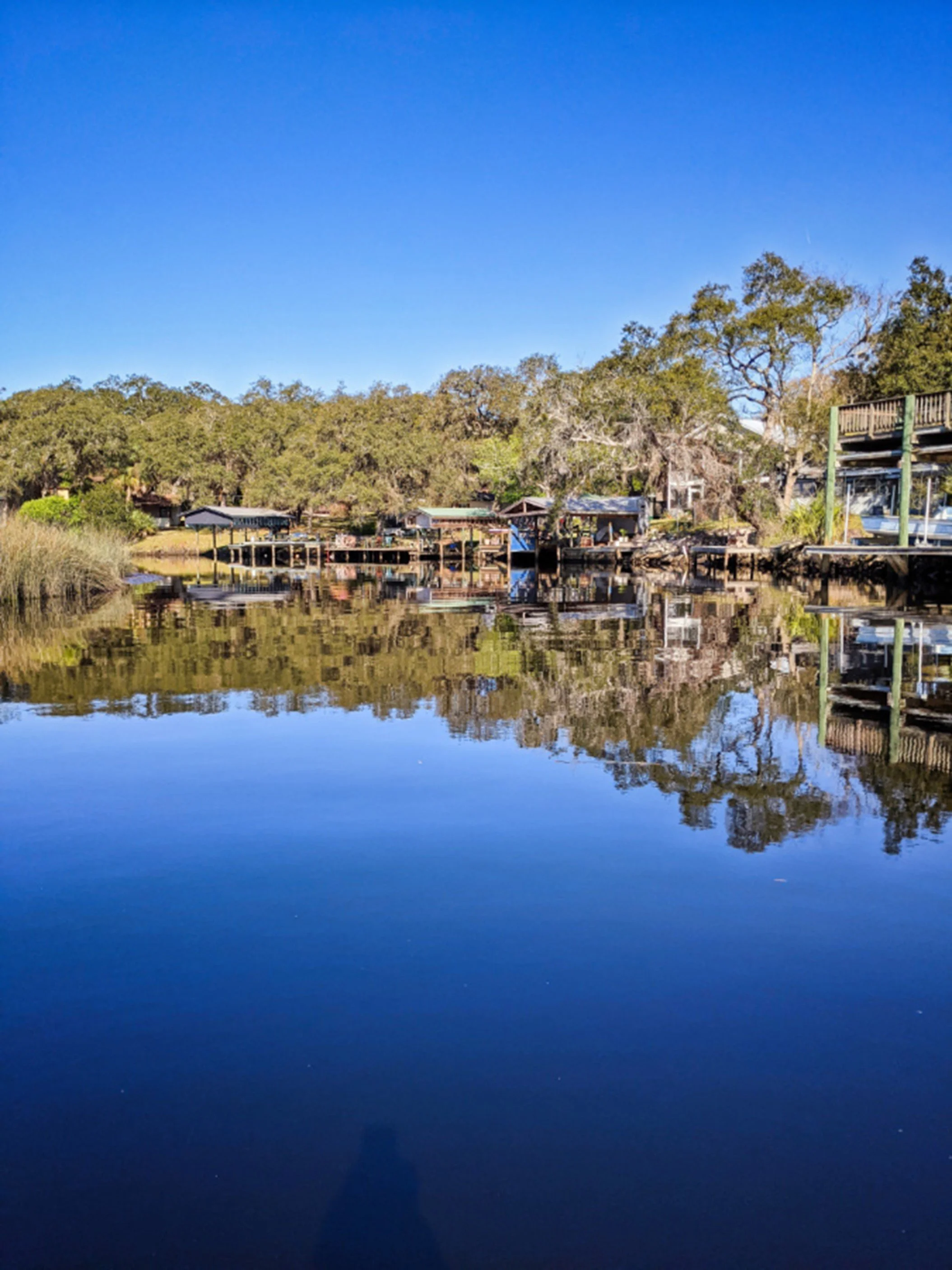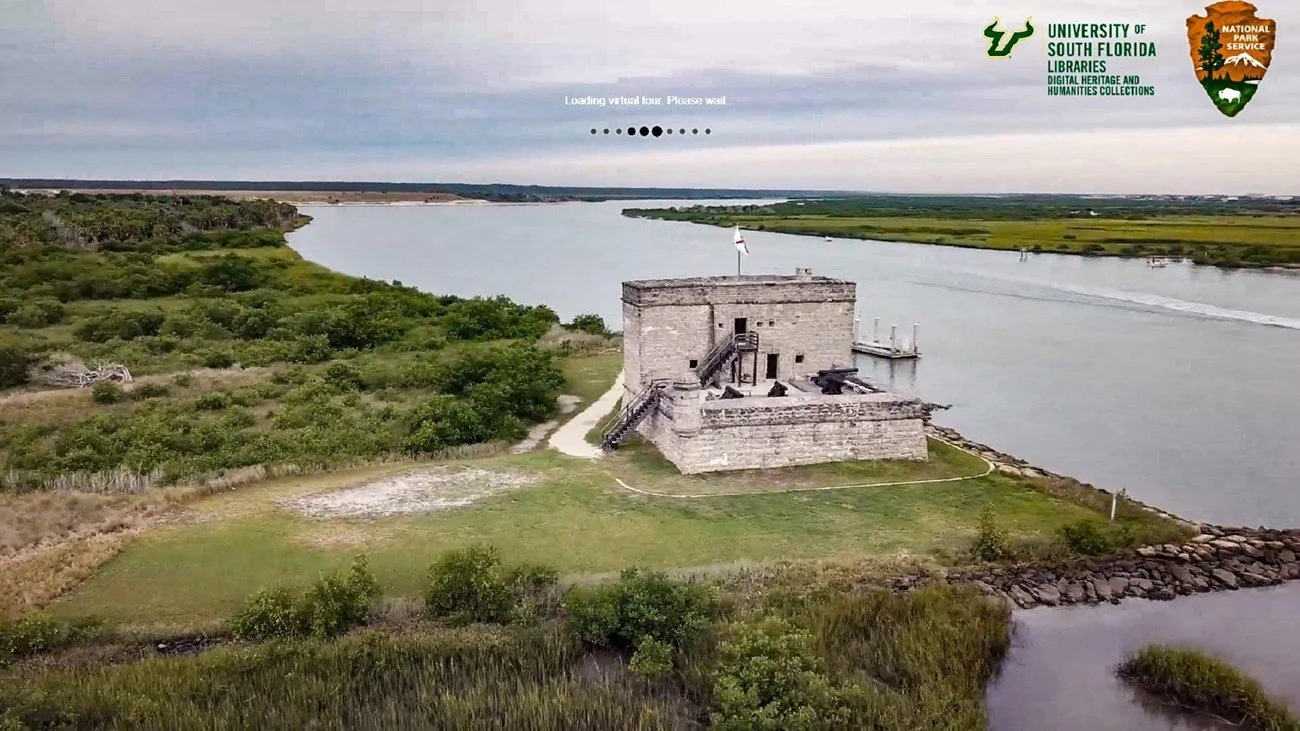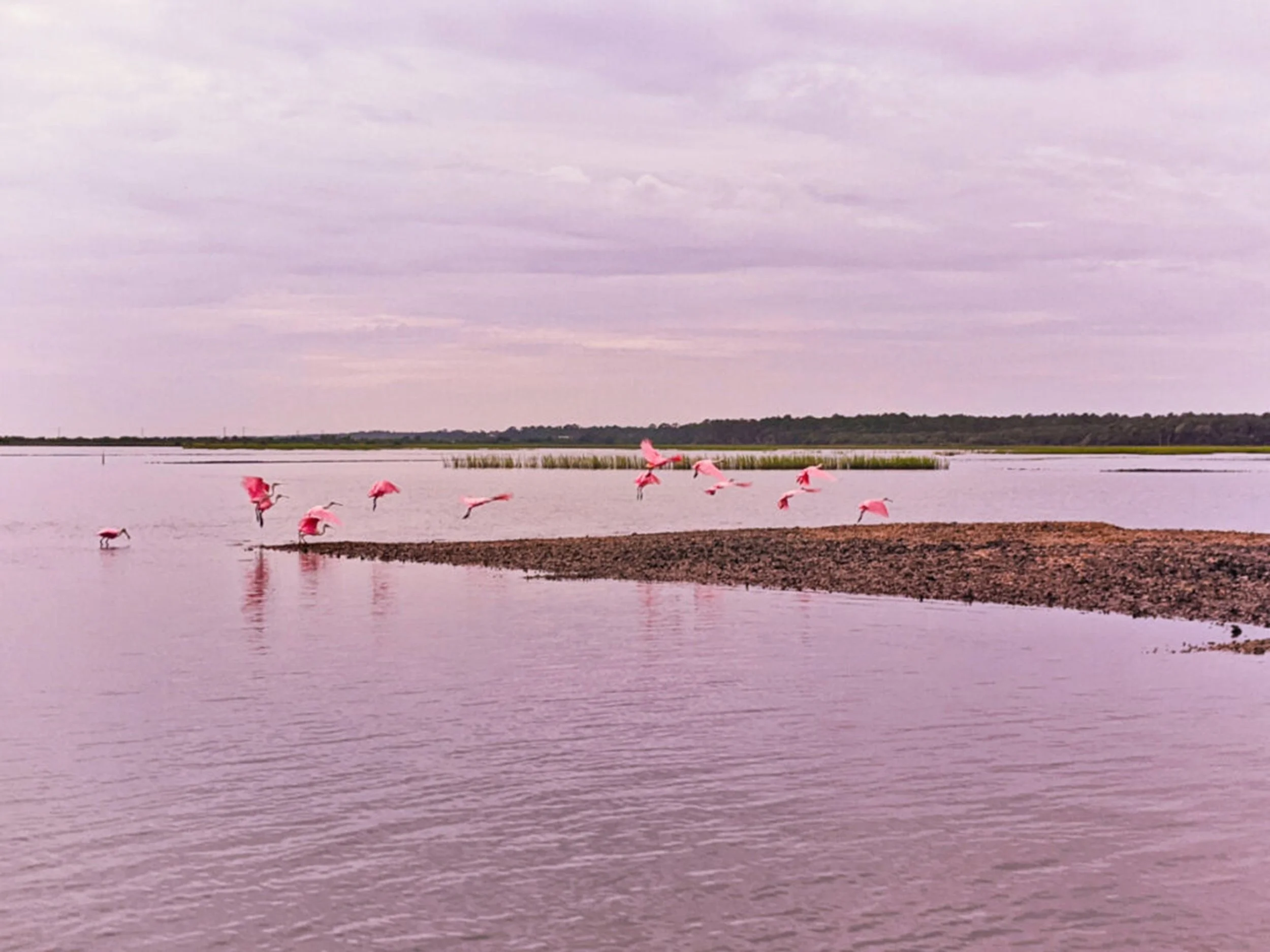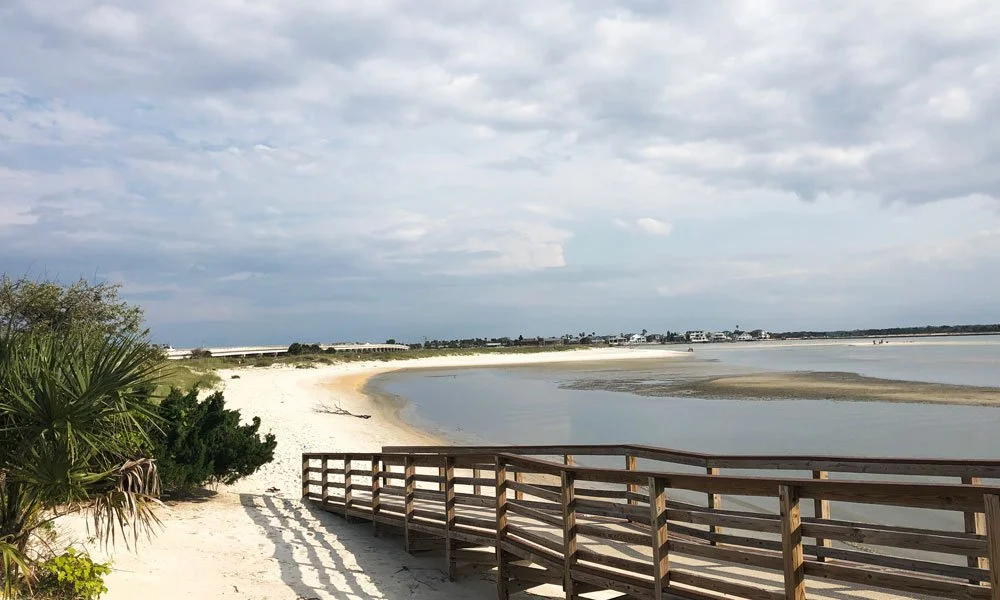St Augustine History Paddle
April 20-26, 2026
Base Camp: Anastasia Island State Park
Total Distance: 35-65 miles over 6 days
Full Trip Fees:
Includes camping (shared campsites have electicity and water), meals, river maps, and evening programs.
$675/Adults
$650/Seniors (65+) and college students
Registration Deadline: February 19, 2026, or when trip capacity of 40 paddlers is reached
Official Outfitter: Please contact Janice @ Paddle Florida at janice.a.hindson@gmail.com
ALL OTHER INQUIRIES – please email janice@paddleflorida.org
Paddling Itinerary:
Nature lovers and outdoor enthusiasts will find much to appreciate on Florida’s Historic Coast. With miles of protected water, and current and tidal flow to help in any direction, we will paddle to historic sites including downtown Castillo de San Marcos and the Bridge of Lions, Fort Mose, Fort Matanzas National Monument and the St Augustine Lighthouse. Our home base for this historic adventure will be at Anastasia State park, where you can explore Anastasia’s four miles of pristine beach in this idyllic location renowned for gorgeous white sand, the park is also rich in both sea and wildlife.
Evening Programs
Evening programs will include presentations from authors, historians, environmental experts, and one night of live music.
Refund Policy
Due to the financial outlay and costs incurred by Paddle Florida during event planning, any force majeure, which includes but is not limited to water levels, inclement weather, and any other Acts of God not mentioned herein, shall not result in the refund of any fees paid to Paddle Florida. Absolutely no fees will be refunded after 15 days before the event begins. Before each trip registration deadline, requests for fee refunds will be considered on a case-by-case basis.
***You will receive a confirmation email message 7 - 10 days before the event with all the latest details on the trip***
Shuttle Details
Paddlers will self-shuttle to the launch each day.
Boat & Gear Recommendations
For this trip, we recommend either a 14 foot or longer sit-in kayak, you should be in moderately good physical condition and know how to swim. We recommend a rudder or skeg and a spay skirt. You should also have solid kayaking, rescue, wet exit, and swimming skills. If you have any questions about the kind of environment you will encounter on this trip, please contact Janice Hindson at janice@paddleflorida.org
Paddle Florida Policies
All paddlers must attend the trip overview and orientation on the first evening. Paddlers must adhere to the safety guidelines presented.
Every Paddle Florida participant must wear a Coast Guard-approved NON-INFLATABLE personal flotation device while on the river (no ifs, and, or buts).
Every kayak and canoe should have a bow line, 8-10 feet in length, secured in such a way that it is readily accessible, but cannot come loose accidentally. Loose ropes increase the risk of entanglement in the event of a capsize.
Kayaks should have grab-loops at both bow and stern.
Paddlers under age 18 are the responsibility of and must be accompanied by, a parent or guardian. No more than two children under the age of 12 per adult guardian.
Sorry, no pets allowed.
All paddlers must provide emergency contact information and sign a Waiver of Claims and Release of Liability form. Parents must sign for their children under the age of 18.
People-powered watercraft only.
Paddle Florida adheres to all rules put forth by the public parks we stay in, including the ban on alcoholic beverages.
All paddlers must respect private property along waterways.
All paddlers must have basic paddling and swimming skills
Violations of any of these policies can result in the paddler being removed from the event without a refund.
Trip Itinerary
Day 1/Monday, April 20, 2026:
Anastasia Island State Park, Paddling Miles: 0
Trip participants will check-in at Anastasia Island State Park between 1-5 PM. After checking in, they will set up their tents in their assigned shared campsite (with electricty and water). More than 1,600 acres of unspoiled beaches, tidal marshes, maritime hammocks and ancient sand dunes make this a captivating destination for visitors.
Anastasia State Park is a haven for visitors and for wildlife. Abundant wading birds hunt for food along Salt Run, including colorful roseate spoonbills. Osprey and eagles rule the skies, and painted buntings and warblers often flit about the hammock forests.
Visitors can observe wildlife along the beach from a canoe or kayak, or on the Ancient Dunes Nature Trail.
As an extra bonus, our campsites will be just a short stroll from the beach. Dinner will be served at 6 PM, followed by an overview of the trip and an educational presentation by regional waterway advocates as part of our place-based learning programs. Afterward, we’ll light the campfire.
Day 2-5, Tuesday, April 21 - Saturday, April, 25:
Scenic paddles highlighting the history and beauty of the area.
Breakfast will be served at 7:30 a.m. Each day we will host a paddle that hightlights the area. Depending on tide, weather and conditions, our hope is that we paddle a bit further on our route and return each evening to our base camp. Yes, this means you can leave your tent up for the duration of our trip.
After the daily paddle, paddlers can relax or explore the park’s hiking trails or the beach. After our 6 PM dinner, paddlers will be treated to the educational speaker or musical entertainment for the evening. We’ll end the evening around the campfire.
Day 6/Sunday, April 26:
Paddlers have a relaxing breakfast, strike camp and prepare for the journey home.
A hearty breakfast will be served at 8:00am, paddlers will then have a couple hours to strike camp and pack for the journey home. All tents and gear need to be taken down by 11am paddlers will head back home with fond memories of a great few days spent on the water.
Some of the places we will visit…
Salt Run
Paddlers will launch from Anastasia State Park to paddle Salt Run.
Paddle through the rich ecosystem of Salt Run. Enjoy views of the St. Augustine Lighthouse, beach dunes and narrow waterways.
2. Fort Mose Historic State Park
Fort Mose Historic State Park is a 40-acre waterfront historic site.
The park offers picnic areas, observation and birding boardwalk, kayak launch boardwalk, a visitor center and museum.
Many educational opportunities are available, particularly for visitors interested in history or wildlife viewing. Enter the year 1738 on the self-guided Flight to Freedom Trail and discover how men, women and children risked their lives to secure freedom for themselves and their families. The trail is a lush woodland path with interpretive panels.
Those inclined toward history will enjoy the interactive museum that tells the complete story of the first legally sanctioned free African settlement in what would become the United States. Although there are no remains of the earth and wooden structures, visitors can view the land where the settlement once stood.
Visitors interested in birding will enjoy ample viewing opportunities for species such as the great blue heron, bald eagle and white ibis.
3. Castillo de San Marcos National Monument & the Bridge of Lions
America Begins Here
Built by the Spanish in St. Augustine to defend Florida and the Atlantic trade route, Castillo de San Marcos National Monument preserves the oldest masonry fortification in the continental United States and interprets more than 450 years of cultural intersections.
Learn More About the Castillo de San Marcos
4. Guana River at GRM Research Reserve.
We love spending time at the GTM Research Reserve, there’s a great boat launch from the Guana Dam area right by the education center. This puts you into the Guana River which flows down to the Tolomato River. Here you’ll see manatees, sometimes dolphins and lots of awesome birds. This is a part of the Intracoastal Waterway that is easy to overlook.
The Guana Tolomato Matanzas National Estuarine Research Reserve (GTM Research Reserve) is one of only 30 national estuarine research reserves in the country. From the ocean to the forests, this beautiful, natural landscape is home to a wide diversity of plants, animals and sea creatures.
A full-scale model of a North Atlantic right whale hangs from the ceiling and welcomes all to the GTM Visitor Education Center. From monitoring oysters and their impact on water quality, to conducting ongoing research of the tortoise population, this is truly a “living classroom.” there are interpretive exhibits, aquariums, laboratories and many hands-on opportunities for visitors of all ages to learn, enjoy and participate in the stewardship of this dynamic ecosystem teeming with life.
5. Fort Matanzas National Monument
A Reminder of an Earlier Time
Fort Matanzas National Monument preserves the fortified coquina watchtower, completed in 1742, which defended the southern approach to the Spanish military settlement of St. Augustine. It also protects approximately 300 acres of Florida coastal environment containing dunes, marsh, maritime forest, and associated flora and fauna, including threatened and endangered species.
6. Matanzas Inlet
Matanzas Inlet is a channel in Florida between two barrier islands and the mainland, connecting the Atlantic Ocean and the south end of the Matanzas River. It is 14 miles (23 km) south of St. Augustine, in the southern part of St. Johns County. The inlet is not stabilized by jetties, and thus is subject to shifting. It is the last remaining natural or undredged inlet on the Atlantic coast of Florida. [1]
Historic maps made by Spanish military engineers in the 18th century show that the inlet today has moved many hundreds of yards south of its location during the time of the Spanish Empire. In 1740, a British invasion force from Fort Frederica, Georgia blockaded this inlet, the southernmost access for boat travel between St. Augustine and Havana, Cuba. Shortly thereafter, in 1742, a coquina stone tower 50 feet (15 m) square by 30 feet (9.1 m) high, now called Fort Matanzas, was built by the Spanish authorities in Florida to safeguard this strategic inlet.
The Matanzas River…
The Matanzas River is a body of water in St. Johns and Flagler counties in the U.S. state of Florida. It is a narrow saltwater bar-bounded estuary sheltered from the Atlantic Ocean by Anastasia Island.[1] The river is part of the Atlantic Intracoastal Waterway.
The Matanzas River is 23 miles (37 km) in length[2] and extends from St. Augustine Inlet southward to approximately 6.5 miles (10.5 km) south of the Matanzas Inlet on the southern tip of Anastasia Island. The waterbody connects ocean inlets in the Port of St. Augustine and at the Fort Matanzas National Monument. The Matanzas River does not flow in one direction, as it is tidally influenced by the two inlets. The river has a tidal range of up to 6 feet (1.8 m).[3]
The Matanzas River at St. Augustine was the main entrance to the historic city, America's oldest port. The body of water is often referred to as the Matanzas Harbor in the immediate vicinity of the city's waterfront. The southern portion of the Matanzas River was traditionally considered the "backdoor" to the city of St. Augustine, and control of the river was considered a strategic necessity for the early Spanish colony at St. Augustine. Spanish engineers and laborers built Fort Matanzas in the 18th century to control access to the river from Matanzas Inlet, about 14 miles (23 km) south of St. Augustine.
The Matanzas River supports an extensive tidal marsh habitat. Extensive conservation efforts including the Matanzas marsh, Faver-Dykes State Park, Princess Place preservation area, Pellicer Place preservation area, Pellicer Creek Aquatic Preserve, the Guana Tolomato Matanzas National Estuarine Research Reserve, and the Moses Creek conservation area have been established to preserve the ecosystem. The preserved areas include salt marshes, mangrove tidal wetlands, oyster bars, estuarine lagoons, upland habitat, and marine environments. The Matanzas River faces several pollution issues, mostly related to urbanization in St. Augustine and the northern portion of Anastasia Island.
Mission Statement
PADDLE FLORIDA is a non-profit corporation that promotes water conservation, wildlife preservation, springs restoration, and waterways protection via fun and educational multi-day paddling trips in Florida’s most spectacular river and coastal environments. The vehicle for carrying out this mission is the staging of the multi-day paddling/camping trips in each of Florida’s five water management districts from October to April each year. Paddle Florida also seeks to promote Florida as an international destination for nature-based tourism in general, and paddling in particular.
Ranging from three to six days, trips are open to all paddling skill levels and designed to maximize enjoyment of Florida’s natural environments while engaging and empowering citizens so that they may become involved in the protection and restoration of our waterways.
If you wish to be pampered by professional guides, this isn’t the trip for you. But, if you want to experience a real community brought together under a common goal and by the thrill of adventure, Paddle Florida is the trip for you
General Guidelines
Baggage:
Each paddler is limited to two bags and a total of 40-pounds of luggage. You have to haul your baggage from your car in the designated parking area to the camping area at the beginning of the trip, and then back at the end. We recommend you pack as lightly and tightly as possible.
Please place a label on your luggage with your name on it and make sure your bags are secure.
The Meal Plan
Your Paddle Florida trip fee covers the meal plan, which provides hearty catered breakfasts and dinners, plus daily lunch snacks of assorted fruits, sandwich items, snacks, and drinks.
Suggested Packing Lists
For Water: [Note: Unless you’re wearing it, every item you bring should be secured to your boat. Carabiners and bungee cords can be handy devices for this purpose.]
Boat and paddle. Need to rent? Janice@paddleflorida.org
PFD. Every Paddle Florida participant must wear a Coast Guard-approved NON-INFLATABLE personal flotation device while on the river (no ifs, and, or buts).
Every kayak and canoe should have a bowline, 8-10 feet in length, secured in such a way that it is readily accessible, but cannot come loose accidentally. Loose ropes increase the risk of entanglement in the event of a capsize. Kayaks should have grab-loops at both bow and stern.
An extra throw rope in case of emergencies should be stored safely in each boat.
Attach a whistle to your PFD or body to signal for help in case of emergency.
A knife.
Waterproof matches or other fire source in waterproof covering.
First aid kit—each vessel should bring a first aid kit stored inside a waterproof covering.
Repair kit—each vessel should be able to make their own repairs (i.e., duct tape, sealant, waterproof tape).
Rain gear—be prepared to get wet and potentially cold. Every participant should have access to a lightweight jacket or fleece, rain jacket, and rain pants or kayak skirt.
Dry change of clothes—be prepared to take an unexpected swim. Every participant should have access to a dry change of clothes kept in a waterproof covering.
Appropriate close-toed footwear that will protect your feet from unseen underwater hazards and permit you to walk comfortably on slippery and jagged limestone when launching and taking out. Flip flops do not meet these criteria.
Sun protection—sunburn might be the trip’s biggest hazard. Bring ample sunscreen and wear a protective hat and sunglasses.
Water—drinking water will be readily available along the Paddle Florida route. Bring sufficient water bottles for the day’s paddle for everyone in your boat.
Food—there is little access to restaurants or grocery stores along the Paddle Florida route. Lunch snacks each day are provided to registered participants. You may also want to bring along your own snacks.
Dry Bag or Ziploc—bring a waterproof bag to protect additional items you don’t want to get wet, like your camera or cell phone.
GPS unit? We’ll give you a map, but a GPS unit might also be handy to note locations of campsites and stops.
For Land:
Tent
Sleeping bag, pad, and pillow
Camp chair
Clothes to keep you comfortable in temperatures generally ranging from 50-85 degrees. Think layers. You’ll likely be wearing more during potentially chilly mornings, then peeling off layers as the day progresses. Remember dry shoes for when you’re in camp and keep in mind there are often hiking trails available at the parks we camp in.
Bathing suit, plus maybe a mask, snorkel, and/or fins.
Headlamp and/or flashlight.
Toiletries and medications.
Other tent items: reading materials, iPod, ear plugs…?
A camera to record the awesome memories you’ll be making!
